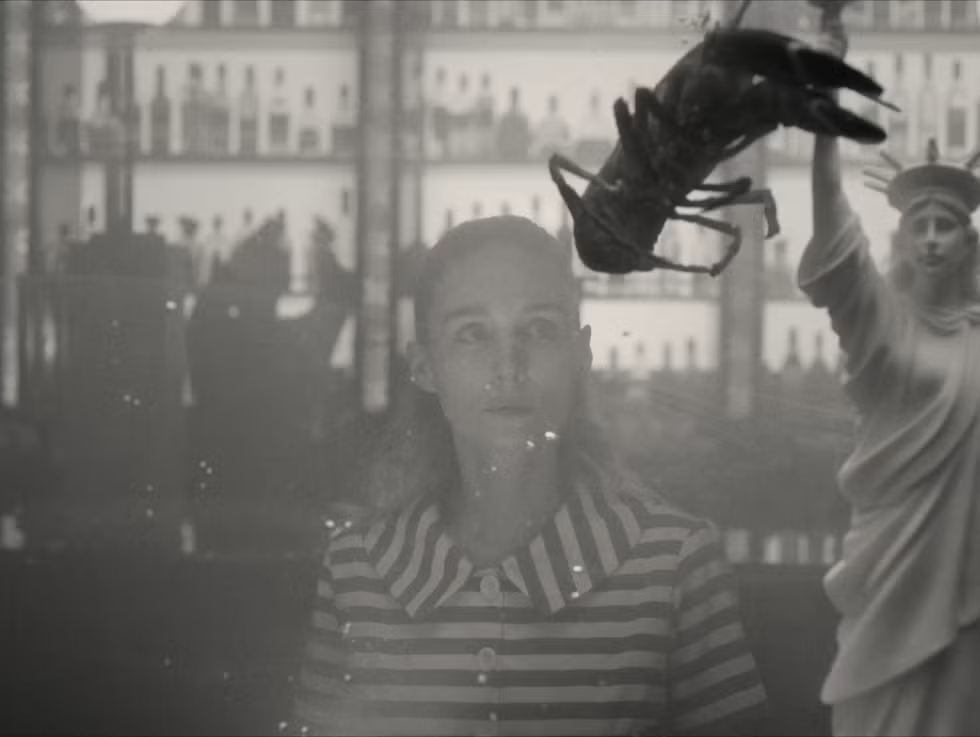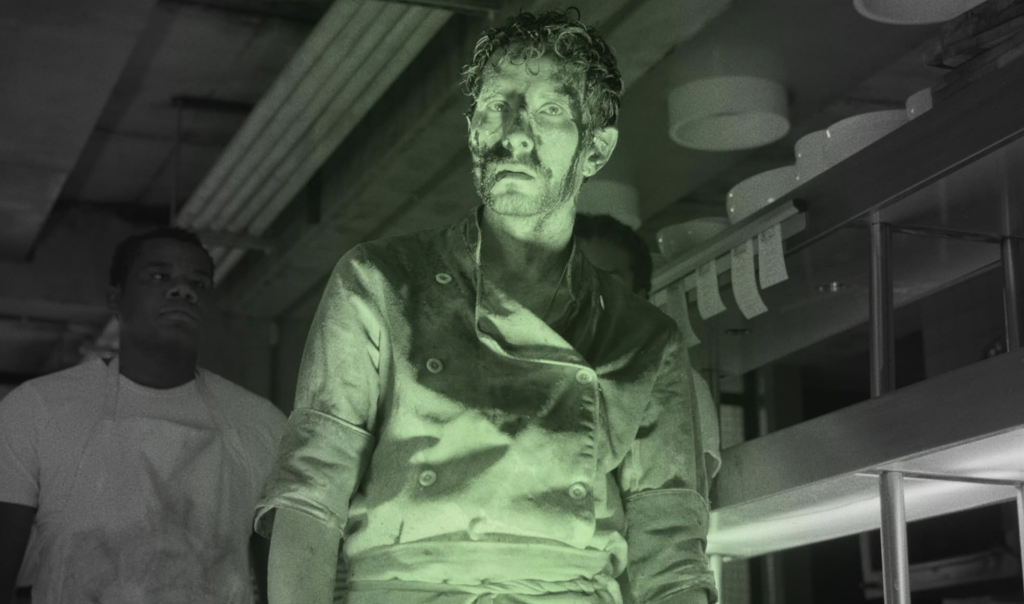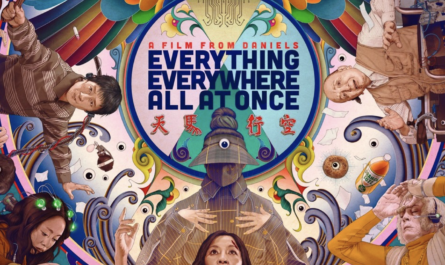Spoiler Alert! This article contains spoilers of La Cocina!!!
I’m so excited to tell you all about this movie!!! One of the actresses, Anna Díaz, trained at the same school I went to. When I was a first-year student at university, studying for a degree in Theater, the school and the student association organized a welcome ceremony for us. First, they gave us flowers, and we held hands in a circle while the senior students gave us a speech on how the Theater Degree is challenging, how being an actor and an artist isn’t always easy, but finding your people and being persistent can take you further than you imagine. In the end, the senior students gave us a good luck charm. We had to look each other in the eye, and when we felt a deeper connection, we could start a conversation. Fun fact, Anna Díaz looked at me and gave me a little pink quartz as a good omen for the start of my acting path. I remember she said that being an actor can sometimes be very difficult and, in moments when it got bad or demotivating, she would look and hold on tight to the quartz she was once given as a first-year student. In that moment, she said she wanted me to have that quartz, so now it could be my lucky charm. Years later, I moved abroad to Copenhagen to study a Diploma in Drama, and after years of not seeing Anna, I still held on to it for good luck and emotional support. Two years later, I was looking at Anna on my screen in La Cocina on HBO Max. Anyways, let me tell you about the movie.
Plot
La Cocina (2024), directed by Alonso Ruizpalacios, is a black-and-white drama set in the frenetic kitchen of “The Grill,” a Times Square restaurant. The story centers on Pedro, a passionate and visceral Mexican cook, and Julia, an American waitress in a complicated relationship. Their affair gets tense when Julia gets pregnant and decides to have an abortion, while Pedro dreams of a different future together.
Issues arise in the kitchen when $823 goes missing from the restaurant’s register, coincidentally, the same amount needed for Julia’s procedure. Pedro becomes the prime suspect, but the money is found at the end of the movie, revealing that no theft happened. As volatile as he is, Pedro has a difficult relationship with his colleague Max. The movie starts with everyone gossiping about how Pedro threatened Max with a knife the night before. However, he then tries to apologize and go back to normal. Unstable and shifting from happy to desperate, the discovery that Julia is already a mother further destabilizes Pedro, leading to his meltdown. After being called a “wetback” by one of the waitresses and fully enraged, he disrupts both the kitchen and dining area, symbolizing his rebellion against the oppressive environment. The film concludes with Pedro bathed in leftovers from the trash and different types of drinks and meals, an eerie green light, a recurring motif that blurs the lines between reality and metaphor, imprinting the image of immigrant experience and the pursuit of the American Dream.
Pedro as a Problematic Main Character
I love it when the main character is annoying or problematic, as if the point of view from the antagonist was finally given enough attention until he became the main character. Pedro is a difficult character for many reasons, but as the audience, the biggest problem for me is that I’m trying to root for him. I want him to be successful, to solve his issues with Max, to help Estela, and to be fully embraced by Julia. In truth, he will never succeed at any of that because he is impulsive and reckless, and he self-sabotages, no matter how good he is in the kitchen, for example, when Estela brought him the “Hoja Santa” from Puebla, and he prepared a delicious sandwich for Julia. He takes two steps forward, but then three steps back.
He’s very smart socially, he gets along with almost everyone, and he can tell a good joke. For example, the scene where he’s goofing around with all the Hispanic chefs and the Moroccan chef, when he manages to make Julia smile, and when he finally convinces the Chef to sing his song before rush hour. However, he’s quick to lose that calculated seduction and turn it into an unbearable nuisance.
I think Pedro self-sabotages because it’s a way of giving up and causing enough chaos to give up once and for all, to put himself into a situation he can’t get out of, because deep down, he is tired of The Grill, Times Square, New York, the US. In a way, he’s forcing himself to escape the American Dream because he can’t handle it anymore, even though he chased it for so long. As Luis said, they gamble everything to get there, they have nothing to fall back on. In a way, the American Dream is a trap because it promises the world, yet it requires you to give everything up. Once you make it to the other side, you risked everything, but did you gain anything?
Like many immigrants, Pedro is impotent because he must face the same high level of stress during rush hours every day, dealing with racism and rejection. He’s in love with Julia and the idea of raising a family with her in Mexico, with all the dollars he’s saved up for years, and building a home for himself, surrounded by beautiful beaches. He wants to be accompanied by his gorgeous, caring, American wife and his child. However, he slowly starts realizing how unlikely this new dream seems. For example, he was quickly pointed out as the $823 thief by Luis. Julia is determined to interrupt the pregnancy, Rashid gives him empty promises on getting his papers just to keep him happy and conformed, and he finds out Julia already has another son.

The American Dream
The movie also portrays the American Dream in different stages. We can observe Laura, a Dominican woman struggling to feel seen and excel at her job, even facing racism from those you’d think are her peers. Pedro has already achieved a certain level of stability within the immigrant experience, but he can’t tolerate the lack of emotional connection, not being able to build a family, settle legally, or get his papers. Samira is seemingly joyful and content with her status, and Nonzo is aware of this fleeting job. The constant threat of losing your job and going back to Times Square, pursuing a dream and a job, is always around the corner; Estela portrays the American Dream at its earliest stage. She also represents the clarity of holding on to whatever job crosses your path because one never knows when one will be back on the streets competing against thousands for one spot.
The Neapolitan Metaphor
In a cigarette break, Nonzo admits to Pedro, he dislikes him in front of Samira, Salvador, and Ratón. But then he starts telling the story about the dream of the Neapolitan. The Neapolitan was a man who arrived at Ellis Island in search of opportunities. When he was stopped at customs and got checked by an immigration officer, he sneezed and revealed a stump. This led to the man being denied entry and sent to a cage with many other disabled immigrants who were rejected. The Neapolitan yelled and pleaded for his case, claiming he could work thrice as hard. After praying and praying, a green light appeared and lit the entire space; an alien had arrived to rescue the Neapolitan and vanished. Months later, the Neapolitan was in New York working at his own Pizzeria. He was never the same again; he carried his sadness like a scar, even though he crossed to the other side. From time to time, he glowed.
– “That’s not a dream, that’s a nightmare”. – Raton
– “You told me to tell you a dream, it’s not my fault, it’s a nightmare”. -Nonzo
This is a metaphor that portrays how you can only get into the United States and cross to the other side with horsepower or a miracle, like being helped by an alien. As Ratón said, it’s a nightmare, and so is the American Dream. It’s sold by Uncle Sam as this beautiful trampoline that will take you to the sky, but it’s just another cage, one that keeps you sad for the rest of your days, only glowing from time to time, like Pedro. Pedro is more than a reckless immigrant; he is a saddened immigrant whose dreams got entangled with a hard reality. Years of putting in the work for the betterment of his life only to find himself stuck in another miserable cycle, joined by hatred for his surroundings, but also self-loathing. Even Luis told Julia, “He’s a fun guy. Everybody knows that. But he’s a fucking bastard too, I know you know that”–, but he’s more than a bastard, he’s a desperate man trying to get by. Juggling the Ulises Syndrome, the American Dream, and the ambition to move forward, but his deteriorated emotional and mental state holds him back.

Final Scene Meltdown
That is also why in the final scene after Pedro wrecks the entire kitchen, repeating the words – “¿Quieres ver a un mojado?”– (Do you want to see a wetback?), there is a green light coming through. It represents the metaphor of the alien and the Neapolitan; this time, Pedro is getting “rescued” by that same light, meaning he will finally get out of that place and move on, hopefully into something better and maybe get the mental care he deserves.
Immigrants are often blamed for things that go wrong. In the movie, the immigrants and kitchen workers are the first to be questioned over the missing $823. Pedro and Max get caught up in a fight in which Pedro loses his temper and threatens Max with a knife. Laura is blamed for late meals, even though she is getting ignored by her colleagues because she is not American or blonde. The reality is that immigrants are pushed to the side. Oftentimes, they’re not even considered part of a nation’s population. What makes you eligible to be considered part of a population? We can pretend that documents are the only things that can provide visibility to immigrant communities, but what if these immigrants pay taxes? They contribute to society; they work service jobs that otherwise no one would fulfill, or be enough to cover. More than that, how can you ignore someone who is physically visible?
In the last scene, when Pedro loses control and destroys the entire kitchen, the orders are still arriving at the faulty machine, and when he goes outside to The Grill’s dining hall, every diner is still waiting for his meal at any cost. No one values or even acknowledges the amount of work the kitchen employees put into a day-to-day course of action until they stop. Pedro looks at the chef, everything torn down, and yells – “Now he cares!”– and then Rashid says –“You stopped my world, who gave you permission?”–. Is a crash-out like that the only thing needed for kitchen workers and immigrants to get the visibility they deserve? Immigrants and service workers are not robots, they need more than monetary compensation; they need mental health care and crisis management strategies. That is why, once Pedro sits down and catches his breath, Nonzo interrupts Rashid to say – “It’s all right. He’s just sick, but he’s leaving now. He’s sick –.
Rashid then says, – “What more is there? What more do you want? I give them food. I pay them well. What more? They eat!”– while the camera pans around him to show the different faces working in his kitchen. Finally, we see Estela again staring at Pedro as the illusion of the American Dream dismantles in front of her, and the green light spreads around Pedro. This final frame is a raw and incredulous portrayal of how unfair the economic gap is, not just in the United States, but globally. Whilst some fight for a worthy life, hoping to get rescued by a miraculous green light, others are cynical enough to think they’re doing God’s work by compensating their workers with the minimum.







707rgh
Thank you, great review. And you helped me understand what the green light means 😅
**mindvault**
mindvault is a premium cognitive support formula created for adults 45+. It’s thoughtfully designed to help maintain clear thinking
**sugarmute**
sugarmute is a science-guided nutritional supplement created to help maintain balanced blood sugar while supporting steady energy and mental clarity.
**glpro**
glpro is a natural dietary supplement designed to promote balanced blood sugar levels and curb sugar cravings.
**prostadine**
prostadine is a next-generation prostate support formula designed to help maintain, restore, and enhance optimal male prostate performance.
**prodentim**
prodentim an advanced probiotic formulation designed to support exceptional oral hygiene while fortifying teeth and gums.
**glucore**
glucore is a nutritional supplement that is given to patients daily to assist in maintaining healthy blood sugar and metabolic rates.
**vittaburn**
vittaburn is a liquid dietary supplement formulated to support healthy weight reduction by increasing metabolic rate, reducing hunger, and promoting fat loss.
**synaptigen**
synaptigen is a next-generation brain support supplement that blends natural nootropics, adaptogens
**nitric boost**
nitric boost is a dietary formula crafted to enhance vitality and promote overall well-being.
**wildgut**
wildgutis a precision-crafted nutritional blend designed to nurture your dog’s digestive tract.
**mitolyn**
mitolyn a nature-inspired supplement crafted to elevate metabolic activity and support sustainable weight management.
**zencortex**
zencortex contains only the natural ingredients that are effective in supporting incredible hearing naturally.
**yu sleep**
yusleep is a gentle, nano-enhanced nightly blend designed to help you drift off quickly, stay asleep longer, and wake feeling clear.
**breathe**
breathe is a plant-powered tincture crafted to promote lung performance and enhance your breathing quality.
**pinealxt**
pinealxt is a revolutionary supplement that promotes proper pineal gland function and energy levels to support healthy body function.
**energeia**
energeia is the first and only recipe that targets the root cause of stubborn belly fat and Deadly visceral fat.
**prostabliss**
prostabliss is a carefully developed dietary formula aimed at nurturing prostate vitality and improving urinary comfort.
**boostaro**
boostaro is a specially crafted dietary supplement for men who want to elevate their overall health and vitality.
**potentstream**
potentstream is engineered to promote prostate well-being by counteracting the residue that can build up from hard-water minerals within the urinary tract.
**hepato burn**
hepato burn is a premium nutritional formula designed to enhance liver function, boost metabolism, and support natural fat breakdown.
**hepato burn**
hepato burn is a potent, plant-based formula created to promote optimal liver performance and naturally stimulate fat-burning mechanisms.
**flow force max**
flow force max delivers a forward-thinking, plant-focused way to support prostate health—while also helping maintain everyday energy, libido, and overall vitality.
**prodentim**
prodentim is a forward-thinking oral wellness blend crafted to nurture and maintain a balanced mouth microbiome.
**cellufend**
cellufend is a natural supplement developed to support balanced blood sugar levels through a blend of botanical extracts and essential nutrients.
**neurogenica**
neurogenica is a dietary supplement formulated to support nerve health and ease discomfort associated with neuropathy.
**revitag**
revitag is a daily skin-support formula created to promote a healthy complexion and visibly diminish the appearance of skin tags.
**sleeplean**
sleeplean is a US-trusted, naturally focused nighttime support formula that helps your body burn fat while you rest.
**memory lift**
memory lift is an innovative dietary formula designed to naturally nurture brain wellness and sharpen cognitive performance.
That’s a great point about creative accessibility! Tools like Play Sprunki really lower the barrier to entry for music creation – no experience needed, just pure fun. It’s amazing how intuitive these platforms are becoming!
Zudem bietet das Casino gute Boni, vielseitige Zahlungsmethoden und einen freundlichen Kundensupport.
Der Anbieter ist bereits seit 1997 auf dem Markt und bietet eine große Bandbreite an neuen und innovativen Spielen. “Wenn du Fragen hast oder Unterstützung benötigst, bietet dir 888 Casino ein paar verschiedene Möglichkeiten. Zunächst kannst du die FAQs durchsuchen, die eine Vielzahl häufig gestellter Fragen abdecken.” “Dieses Unternehmen bietet seinen treuen Spielern sowohl eine perfekt entwickelte mobile Website als auch eine App für iOS und Android. Das 888 mobile Casino ist optimal für den kleineren Bildschirm angepasst und ermöglicht dir ein nahtloses Spielerlebnis. Die Navigation ist intuitiv und es gibt keine unnötigen Wartezeiten beim Wechsel zwischen verschiedenen Angeboten. Registrieren und Einloggen wurde dir einfach gemacht, da die entsprechenden Buttons direkt oben rechts platziert sind.” Der Registrierungsvorgang
für Ihre 888casino-Anmeldung ist jetzt abgeschlossen!
Er kann mit diesem Gratis-Geld für jeweils Black Jack,
Roulette und zwei Video-Slots spielen. Deshalb empfiehlt es sich, zum Freispielen möglichst nur Slots und
Rubbel-Lose zu verwenden und nicht unbedingt auf dem
Bonus Höchstbetrag zu bestehen. Wer eine Strategie hat, sollte sie
nach seiner Anmeldung zuerst in Freispielen testen. Gibt es
Tipps und Tricks für mich als Spieler, um erfolgreicher Roulette bei diesem
Casino zu spielen? Wer dem Computer das Werfen der Kugel überlässt, kann in der VIP Auto Version mit Limits von 1 bis 10000€ spielen. Vollautomatisch spielen kann man beim
Auto Roulette schon ab 0,50€. Kunden, die ihr Spieler-Konto über Neteller aufladen, müssen sich auf 40-maliges Freispielen des Bonus einstellen.
References:
https://online-spielhallen.de/cpu-rangliste-nov-2025-update-ryzen-9-9950x3d/